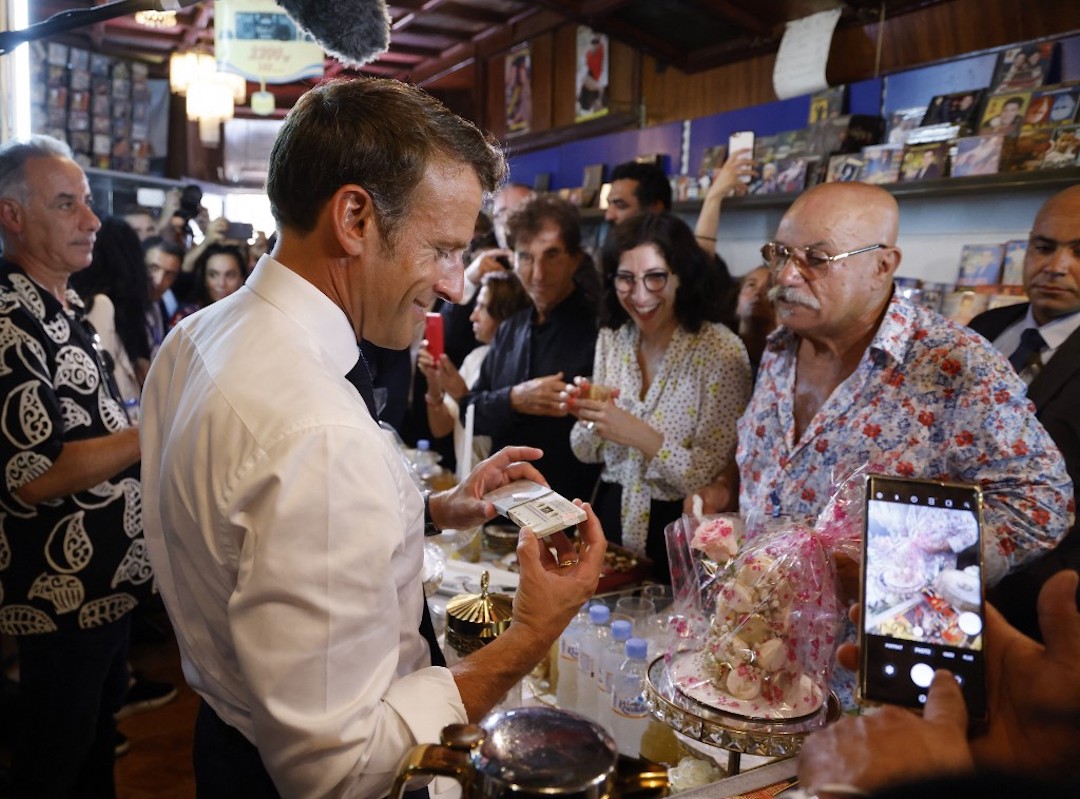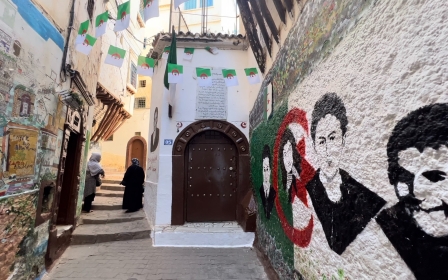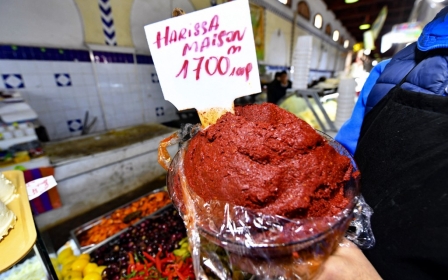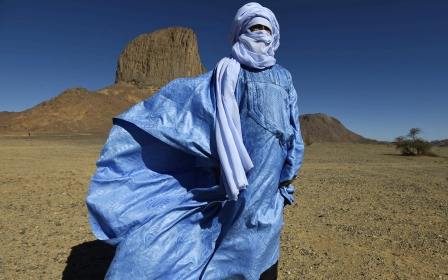‘In Oran, people live’: Algeria’s second-largest city improves its image

On the high-speed train from Algeria’s capital, Rachida, a 48-year-old architect, excitedly scanned the passing landscapes. This was the first time she had taken such a means of transport to go on holiday in Oran.
She had just acquired a pied-a-terre on the very touristy corniche, a seaside boulevard in the Mediterranean city.
“My husband has already driven with the children and our luggage. I am joining them with my sister,” she told Middle East Eye.
Rachida, who lives in Algiers, discovered Oran during a family getaway two years ago.
The large city of 1.5 million people, located in western Algeria, charmed her with its joyful and relaxed atmosphere, its festive evenings that last until dawn and its dazzling landscapes all the way to the bay, which earned it the nickname El Bahia (“the radiant”).
New MEE newsletter: Jerusalem Dispatch
Sign up to get the latest insights and analysis on Israel-Palestine, alongside Turkey Unpacked and other MEE newsletters
“I never understood why Albert Camus was so unfair to Oran by describing it as an ugly and boring city that turns its back to the sea. Maybe that was in another era,” Rachida said, referring to the French writer born in Algeria in 1913, during the colonial period.
Standing on the Oran train station platform after a four-hour journey, Rachida breathed in the salty breeze and described the city as “an open window through which a wind of freedom blows.”
At the entrance of the station, Kader, a taxi driver waiting for travellers, shared her enthusiasm.
“Here, everyone lives as they want. There is a lot of tolerance,” he told MEE.
The train station was erected in 1908 by the French in a neo-Moorish style. Symbols of the three monotheistic religions have been integrated into its architecture as a nod to the Muslim, Jewish and Christian communities that lived in the city at the time.
The clock, for example, is shaped like a minaret, while Christian crosses and Stars of David adorn the ceilings and window grilles.
The imposing station contrasts with the more modest neighbouring buildings of Mdina Jdida, the historic heart of Oran, built at the beginning of the French colonisation to confine and control the indigenous people.
The district, known for its bazaar-like diverse market, is also the birthplace of great figures of the Oranese chanson, such as Blaoui Houari and Ahmed Wahbi.
‘Disco Maghreb’, the tourist attraction
A few hundred metres away, in Sidi El Bachir Street, other celebrities such as Cheb Khaled and Cheb Mami, who propelled Rai music onto the international scene, are displayed on the shelves of record shop Disco Maghreb, forever engraved on the covers of audio cassettes from another era.
The store, opened in the 1980s and popularized by the Oran-native world star DJ Snake in a 2022 video clip, has transformed into a major tourist attraction.
Every day, its weathered storefront serves as a backdrop for selfie-takers. Youcef, a 29-year-old French-Algerian visiting Oran, is no exception to the ritual.
“Rai music nourished my childhood. My parents were fans of Hasni,” he told MEE, referring to the Algerian Rai icon nicknamed ‘‘the Nightingale” who was assassinated during the Algerian civil war in 1994.
“I was born the year he was killed. At home, his songs were played all the time,” he added, before posing for a photo in front of the shop’s lowered shutter.
During a trip to Algeria in August 2022, French President Emmanuel Macron made a detour to Disco Maghreb, where he met the owner, Boualem Benhoua.
Ahead of the visit, the run-down suburb that hosts the record store, as well as the uptown Plateau district home to the birthplace of fashion designer Yves Saint Laurent, underwent facade restoration work.
But not all the buildings, standing like cracked skeletons defying time, could be repainted.
“The old buildings are collapsing everywhere. Go and see [the districts of] Gambetta, El Kmul, El Hamri,” Mustapha, a fruit and vegetable seller, told MEE.
In Sidi El Houari, where the street vendor usually makes a stop, sections of devastated buildings follow one another, like vestiges of a glorious memory.
Built by Andalusian sailors in 900, the district is named after a Muslim saint born in Oran, the patron of the city.
Women from the borough and elsewhere converge on the site in search of blessings.
Hassiba, from Tizi-Ouzou, the second-largest city in Kabylia, in the north, is one of them. She walked all the way up from the seafront, where she rented a studio, to make an offering to Sid El Houari: a piece of fabric that she carefully unfolded on his tomb.
“Oran is a city that is both mystical and festive. People here live in a community, in perfect harmony and with great tolerance,” she told MEE.
Oran’s reputation contrasts with that of the capital Algiers, which is seen as more conservative, austere and early-to-bed, in addition to experiencing a greater police presence.
Fashionable showcase
On the crest of Djebel Murdjajo, a mountain range that dominates Oran, the Santa Cruz Fort, built when the city was conquered by the Spanish in the 16th century, remains its tourist symbol, its postcard.
Every day, visitors pace up and down the fortifications before taking a break from the sun a few metres below, under the arcades of the Basilica of Our Lady of Salvation or in a cave that served as a retreat for Sidi Abdelkader, another saint of Oran.
An elderly woman, who had set herself up as the guardian of the place, guided pilgrims and onlookers into the grotto lit by candles.
‘People here live in a community, in perfect harmony and with great tolerance’
- Hassiba, an Algerian tourist
“I’ve been coming here for years. I sweep, light candles and rest while admiring the landscape,” she told MEE at the entrance of the site.
Translation: “Capturing the enchanting sunset in Oran, accompanied by the moving melody of Cheb Hasni.”
At her feet lay an unrivalled panorama: the sea outlining the bay, the Mers al-Kebir harbour with its naval base, the working-class neighbourhoods, and then the new districts dotted with tall, gleaming buildings.
Fifteen minutes from the city centre, Hai Seddikia, an old town located on the road to the Canastel forest, has become the fashionable showcase of Oran with its high-end hotels and residences.
Nearby, the restaurants that line up Akid Lotfi Street are always full. As soon as night falls, long queues of customers waiting for available tables spill over into the road.
“The evenings are very lively here. People go out, stroll around. They live,” Lamine, a 26-year-old tourist from Lyon, told MEE.
Every summer, he spends a month in the Andalouses tourist complex, 28 kilometres away. There, he enjoys listening to the stars of Rai who electrify the stage every evening.
“I am happy that this music, that once was underground and confined to cabarets, is now breaking free, because it is part of our heritage,” he said.
At the 2022 Mediterranean Games in Oran, it was the legendary group Raina Rai who, among other artists, animated the opening ceremony.
The event, marked by the participation of 3,300 athletes from 26 countries, gave the city the opportunity to shine and offer the world the image of a welcoming place with a rich past.
During their stay, the athletes were invited by the municipality to tour the city, in particular the Santa Cruz Fort. Similar trips were organised for the athletes who took part in the Arab Games in July 2023, which also took place in Algeria.
“Oran deserves to be known,” Lamine said with fervour, determined to return to bask in the sun and dance at the Andalouses next year.
Translated from MEE French edition (original).
Middle East Eye delivers independent and unrivalled coverage and analysis of the Middle East, North Africa and beyond. To learn more about republishing this content and the associated fees, please fill out this form. More about MEE can be found here.





